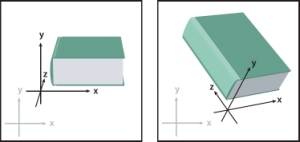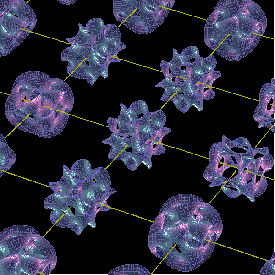By
Sundeep Bharthepudi
Design methods change based on technology but communication remains at the core of visual design. Technology has helped design evolve to the point where it is not only used to inform the public but to also entertain. Game design is an excellent example as a game can be informative, educational and entertaining. The design of visual information has concerned man since the dawn of history and flowered during the development of print technology. Early printmaking was limited to static images and text, the majority of the prints were of an informative nature such as technical illustrations and religious icons.
Information communicated from one human to another has always needed a design or a plan. Throughout history, pictorial imagery and emblematic presentations have aided man in making more complete and better defined records, thus making his life more intelligible and well ordered. In ancient Syria, many Centuries before Christ, men of intelligence and sophistication rolled and stamped images on clay. And these cylinder seals are certainly among the oldest existing artifacts that preserve information in both pictorial and word like symbols. The hard and durable etched surfaces preserved a greatly condensed record of powerful society. Today, we are assaulted by communication stimuli on all sides. The very idea of visual information- whether by primitive word and gestures or by a blatant audio visual advertisement on a television screen – remains relatively the same to the clay stamps in ancient Syria. This bombardment of information generally has a limited set of aims: to inform, promote, influence, entertain, or express.
With the rise and spread of print technology and the printed page, came the great acceleration of human progress. People were becoming increasingly curious about the world and literacy was at the same time both the cause and effect of mass communication. Without literacy there would have been no widespread market for printed materials and without the printed media there would have been less reason for people to learn how to read. As time progressed processes and techniques improved with technology. News was being illustrated in pictures created by traveling artists whose work was transferred onto plates. This transfer process is known as photo-engraving, which first appeared in 1872, and by the following year the United States of America already had its first newspaper illustrated with printed photographs. Graphic images rapidly became an important part of our life. Shortly there-after a brand new medium entered the scene: the motion picture. This powerful visual medium, reduced word content to only a few captions. The influence of movies in spreading visual information throughout the world was a phenomenon in the history of graphic communication. In addition, the newsreel was becoming another part of the national habit. Motion picture and TV demonstrated their ability to reflect the world’s manners and morals and their ability to alter and modify them. In a broad sense, they are part of a nation’s news system, it’s industry, and the educational system of a society. Significantly, they together with radio, have represented the first important attempts at mass communications in illiterate countries throughout the world. Their visual strength is such that they are a prime institution capable of initiating ideas and altering our thought patterns. It becomes obvious that without prints we should have very few of our modern sciences and technologies for all of this is dependent, fist or last, upon information conveyed by exactly repeatable visual or pictorial statements. Far from being minor works of art, prints are among the most important and powerful tools of modern life and thought. Through the mastery of replicable materials, design went from playing a strictly utilitarian role to being at the forefront of creative endeavors. The expectations from the public audience also changed, from passively receiving information to the expectation of being entertained. Communication is now associated with providing an experience. The computer game has emerged as the prime vehicle for this medium. The computer game is an art form because it presents its audience with reality and fantasy experiences that stimulate emotion.
The artist has a tool that is more subtly indirect than traditional art. In printmaking, the artist directly creates every single element on the page that the audience will encounter. Since this experience is carefully planned and executed, the audience must somehow be prevented from disturbing it; hence, non participation. With a game, the artist creates not the experience itself but the conditions and rules under which the audience will create its own individualized experience. The demand on the artist is greater, for he must plan the experience indirectly, taking into account the probable and possible actions and reactions of the audience. The return is far greater, for participation increases attention and heightens the intensity of the experience. When we passively observe someone else’s artistic presentation, we derive some emotional benefit, but when we actively participate in a game, we invest a portion of our own ego into the fantasy world of the game. This more sizable investment of participation yields a commensurately greater return of emotional satisfaction. Indeed, the role of participation is so important that many people derive greater satisfaction from participating in an amateur artistic effort than from observing a professional effort. Hence, games, being intrinsically participatory, present the artist with a fantastic opportunity for reaching people in new ways. The technology behind modern games may make them appear miles away from that of a printing press. However, both old and new processes are based around the same primitive ability to easily replicate information for the intention of communicating to a broad audience.
Design methods and process changed with technology as time progressed, but the core of visual design has always remained the same- communication. The way of communicating has evolved from being informative to engaging and entertaining. Technology and design go hand in hand one cannot advance with out other. Without design technology is just a tool with no purpose. Design with out technology is primitive and limited.


